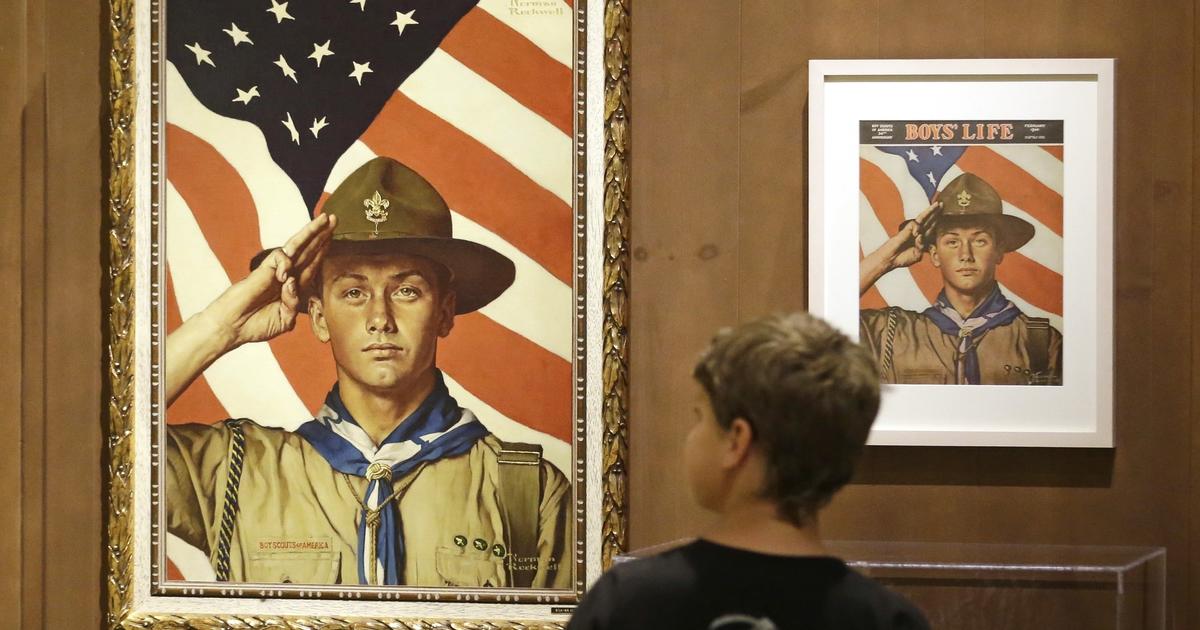"Franky Boy" Cali's murder highlights mafia's violent history in NYC
The murder of Francesco "Franky Boy" Cali on Staten Island on Wednesday night was the first assassination of a Gambino crime boss since "Big Paul" Castellano was gunned down outside outside a popular Midtown Manhattan steakhouse in 1985. The pair of sensational shootings highlights a violent and storied history of the mob in New York City, CBS New York reported.
The American mafia has long been glorified in movies and pop culture, but in the Big Apple, the mob's "Five Families" helped shape the city while casting a shadow over it like a Manhattan skyscraper.
Organized crime firmly established its New York roots in the 1920s during prohibition, when Italian families were aggressively waging war over territories and absolute control over lucrative bootlegging operations.
It was a violent period, with Jewish and Irish gangs also vying for power. But it was ultimately Italian families, known as the mafia, that prevailed.
Joe Masseria and Salvatore Maranzano were the early crime bosses who divided up New York territories and set up the infamous "family structure." It's said to have been Maranzano who proclaimed himself "the boss of bosses" and instituted the "code of conduct" to have all families pay tribute to him.
Maranzano was murdered in 1931 within roughly six months of that order, reportedly on the orders of Charles "Lucky" Luciano.
Over the next several decades, the dominant five families — Bonanno, Colombo, Gambino, Genovese and Lucchese — expanded into other business ventures such as unions, construction and drug trafficking which provided robust revenue streams allowing for a strong and steady growth of the families and their spheres of influence.
In the 1970s, their growing public profile in other businesses such as restaurants and nightclubs, along with their increasing influence on public officials, eventually led Congress to pass the Racketeer Influenced and Corrupt Organizations Act, or RICO, to allow prosecutors to go after crime families and their sources.
A decade later, then-U.S. Attorney Rudolph Giuliani announced his top priority was to defeat organized crime in New York. It was estimated that nearly 6,000 mob associates and so-called "made men" were living in the area at the time. As part of his federal investigation, Giuliani ordered wiretaps that captured conversations about drug sales and the 1979 murder of Bonanno leader Carmine Galante.
The city is infamous for other high-profile murders in recent history. In 1972, Joe Gallo was shot outside Umberto's Clam House in Little Italy and of course, Castellano was whacked outside Sparks Steakhouse in 1985.
"Those murders took place in the 1970s, which was a very fractious time in the mob," organized crime expert Tony DeStefano said. "There was a lot of anger against Joe Colombo because of his visible touting of the Italian-American cause."
Castellano's death led to the rise of John "Dapper Don" Gotti, famously known as the "Teflon Don" as he successfully dodged conviction after conviction in a series of show-stopping trials. In 1992, he was eventually convicted of murder and racketeering, among other charges, and was sentenced to life in prison without parole. He succumbed to throat cancer ten years later at a Missouri prison hospital.
Gotti's high visibility led, in part, to increased scrutiny of other mafia figures. In recent years, that's changed to a more low-key presence to avoid scrutiny from police and the FBI. After Gotti went to prison, Cali eventually took over the organization.
While there's been less reported violence of late, sources indicate there's still a strong mafia presence in the trafficking of heroin and Oxycontin, with gambling and construction still a large source of revenue.
"Now the traditional mob makes its money through drugs. That's where most of the money is now," said David Shapiro, former special agent with the FBI.
Police are looking into whether Cali's murder was the work of an organized crime gang, or a faction inside the Gambino family, including John Gotti's brother, Gene, who was released just months ago after serving 29 years for dealing heroin.
"The mob today isn't like it was and particularly with the Gambino crime family, I think with the Sicilian faction keeping things close to the vest and tamped down that it sort of remains to be seen," DeStefano said. "I don't think we're on the cusp of any big mob war at this stage."



